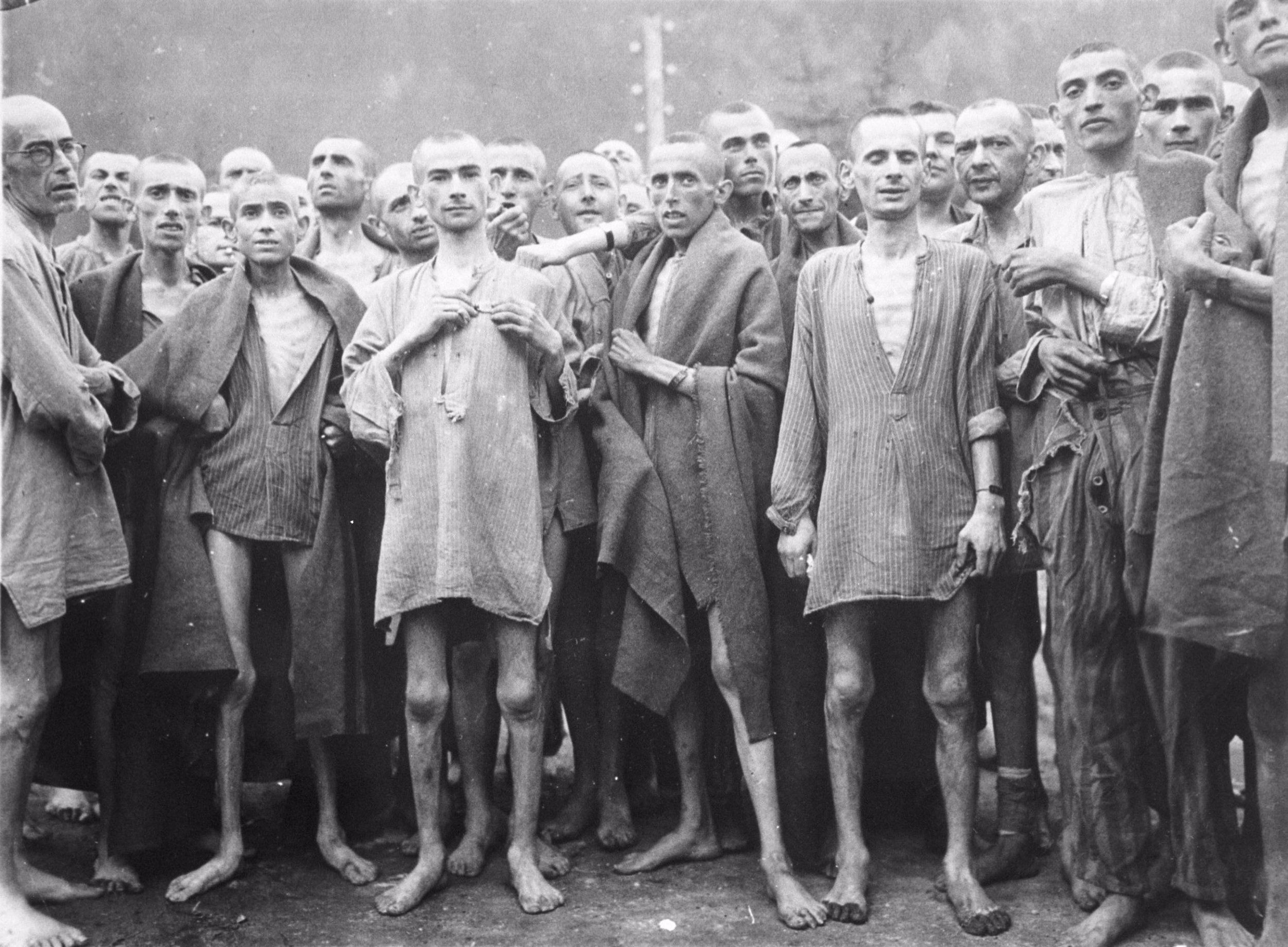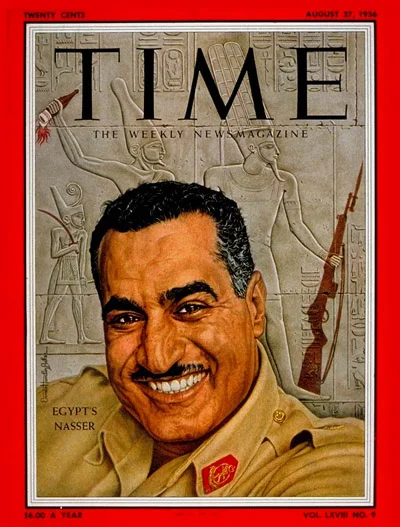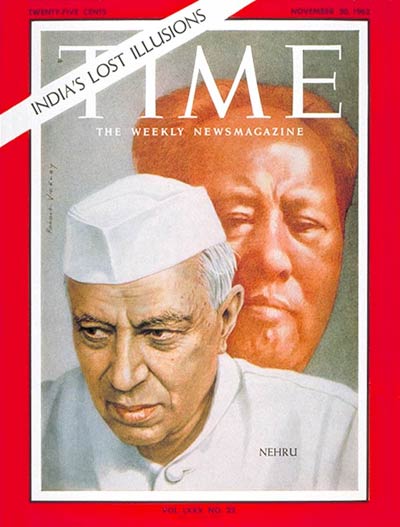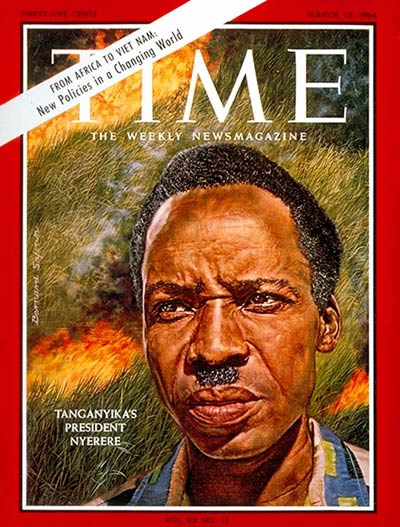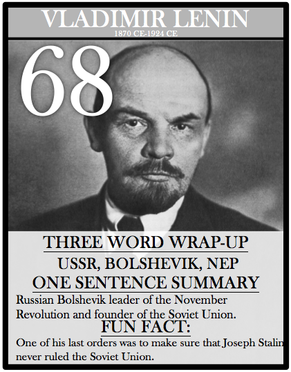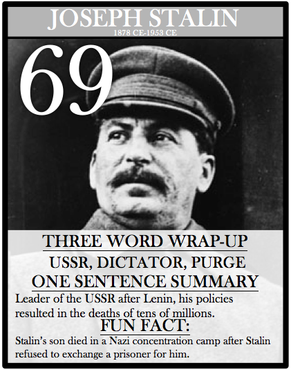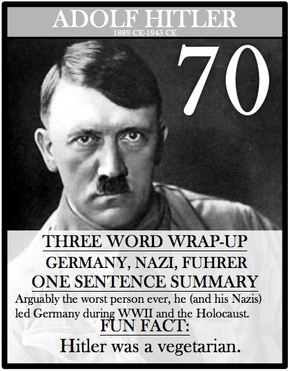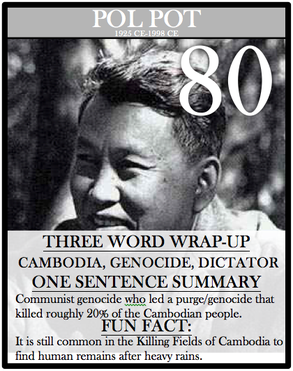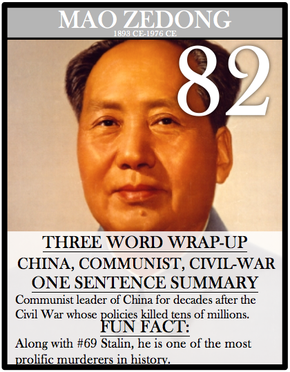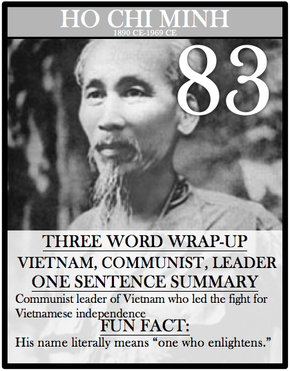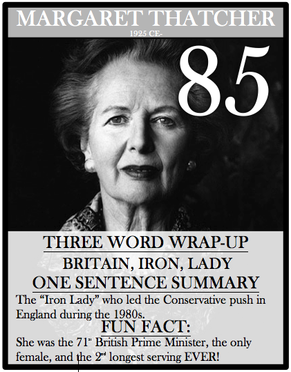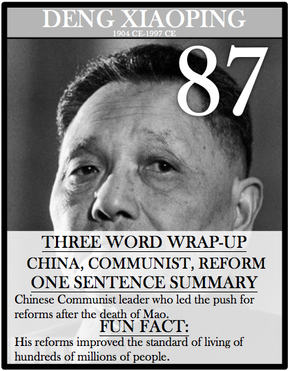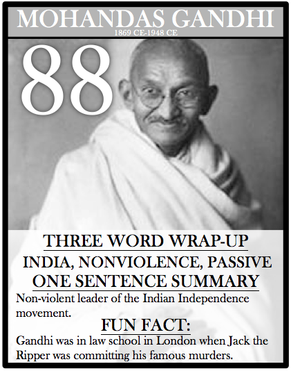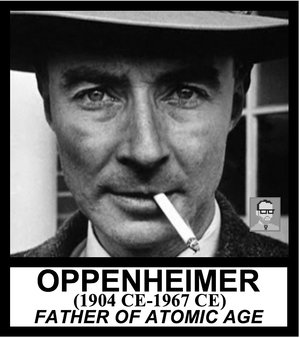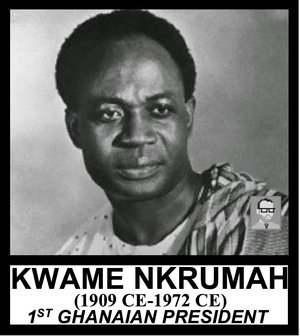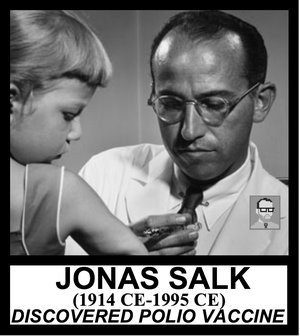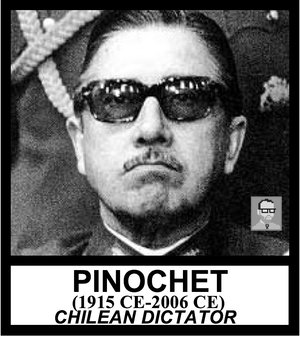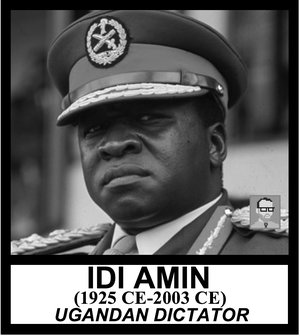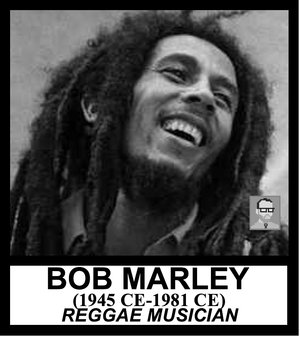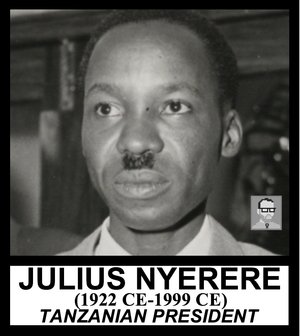Wow, look at that we are finally at the final time period . . . the era you were born in. The 20th century is the shortest era as far as historical time that elapses, but it is chock full of important stuff that happened. Global conflicts, increasing global trade, global contacts through new globally spread technologies . . . yes this is the era of full globalization. It is also the era when the United States becomes the world leader in pretty much everything. European colonialism evaporates after World War II and the Cold War rages for the second half of the century. This is the modern era, hopefully we have the time to finish it before the exam . . . .
Unit VI in Maps
Overview of Unit
Unit VI Key Concepts
The Contemporary Era => Accelerating Global Change and Realignments (1900 CE to Present)
Rapid advances in science altered the understanding of the universe and the natural world and led to the development of new technologies. These changes enabled unprecedented population growth, which altered how humans interacted with the environment and threatened delicate ecological balances at local, regional, and global levels
KEY CONCEPT 6.1: Rapid advances in science and technology altered the understanding of the universe and the natural world and led to advances in communication, transportation, industry, agriculture, and medicine.
1. Researchers made rapid advances in science that spread throughout the world, assisted by the development of new technology
A. New modes of communication and transportation virtually eliminated the problem of geographic distance.
B. The Green Revolution and commercial agriculture increased productivity and sustained the earth's growing population as it spread chemically and genetically modified forms of agriculture.
C. Medical innovations, such as vaccines and antibiotics increased the ability of humans to survive and live longer lives.
D. Energy technologies, including the use of petroleum and nuclear power, raised productivity and increased the production of material goods.
II. As the global population expanded at an unprecedented rate, humans fundamentally changed their relationship with the environment.
A. As human activity contributed to deforestation, desertification, and increased consumption of the world's supply of fresh water and clean air, humans competed over these and other resources more intensely than ever before.
B. The release of greenhouse gases and other pollutants into the atmosphere contributed to "debates" about the nature and causes of climate change.
III. Disease, scientific innovations, and conflict led to demographic shifts.
A. Diseases associated with poverty (Malaria, Cholera, Tuberculosis) persisted, while other diseases emerged as new epidemics (1918 Flu, HIV/AIDS, Ebola) and threats to human survival. In addition, changing lifestyles (Diabetes, Heart Disease, Alzheimer's Disease) and increased longevity led to higher incidence of certain diseases.
B. More effective forms of birth control gave women greater control over fertility and transformed sexual practices.
C. New military technology (Tanks, Airplanes, Atomic Bombs) and new tactics (Trench Warfare, Firebombing) and the waging of "total war" led to increased levels of wartime casualties (Nanjing(some of these images may be offensive to younger students), Dresden, Hiroshima).
KEY CONCEPT 6.2: Global Conflicts and their Consequences
At the beginning of the twentieth century, a European-dominated global political order existed, which also included the United States, Russia, and Japan. Over the course of the century, peoples and states around the world challenged this order in ways that sought to redistribute power within the existing order and to restructure empires, while those peoples and states in power attempted to maintain the status quo. Other peoples and states sought to overturn the political order itself. These challenges to, and the attempts to maintain, the political order manifested themselves in an unprecedented level of conflict with high human casualties. In the context of these conflicts, many regimes in both older and newer states struggled with maintaining political stability and were challenged by internal and external factors, including ethnic and religious conflicts, secessionist movements, territorial partitions, economic dependency, and the legacies of colonialism.
I. Europe dominated the global political order at the beginning of the twentieth century, but both land-based and transoceanic empires gave way to new forms of transregional political organization by the century’s end
A. The older land-based Ottoman, Russian, and Qing (SEE THE CRASH COURSE BELOW ON CHINA) empires collapsed due to a combination of internal and external factors (Economic hardship, political and social discontent, technological stagnation, military defeat).
B. Between the two world wars, European imperial states often maintained control over their colonies and in some cases gained additional territories.
C. After the end of WWII, some colonies negotiated their independence..
...while other colonies achieved independence through armed struggle.
II. Emerging ideologies of anti-imperialism contributed to the dissolution of empires and the restructuring of states.
A. Nationalist leaders (Mohandas Gandhi, Ho Chi Minh, Kwame Nkrumah)in Asia and Africa challenged imperial rule.
B. Regional (Quebecois), religious (Muslim League in British India), and ethnic movements (Biafra Movement in Nigeria) challenged both colonial rule and inherited imperial boundaries.
C. Transnational movements sought to unite people across national boundaries.
D. The Mexican Revolution arose in opposition to neocolonialism and economic imperialism...
...Movements to redistribute land and resources developed within states in Africa, Asia, and Latin America, sometimes advocating communism and socialism.
E. In many parts of the world, religious movements sought to redefine the relationship between the individual and the state.
III. Political changes were accompanied by major demographic and social consequences.
A. The redrawing of old colonial boundaries led to population resettlements or displacement (India/Pakistan Partition, Zionist Jewish settlement of Palestine, Division of middle east into Mandates).
B. The migration of former colonial subjects to imperial metropoles (the former colonizing country, usually in the major cities) (South Asians to Britain, Algerians to France, Filipinos to the United States) maintained cultural and economic ties between the colony and the metropole even after the dissolution of empires.
C. The rise of extremist groups in power led to the annihilation of specific populations, notably in the Holocaust during WWII, and to other atrocities, acts of genocide or ethnic violence. (Armenians in Turkey during and after WWI, Cambodia during the late 1970s, Tutsi in Rwanda in the 1990s.)
IV. Military conflicts occurred on an unprecedented global scale.
A. World War I and World War II were the first “total wars.” Governments used ideologies, including political propaganda, art, media, and intensified forms of nationalism to mobilize populations (both in the home countries and the colonies or former colonies)(Gurkha soldiers in India, ANZAC troops in Australia, Military conscription), for the purpose of waging war and, in the case of totalitarian states, to direct many aspects of daily life during the course of the conflicts and beyond
B. The sources of global conflict in the first half of the century varied. Required examples of the sources of global conflict:
- Imperialist expansion by European powers and Japan
- Competition for resources
- Ethnic conflict
- Great power rivalries between Great Britain and Germany
- Nationalist ideologies
- The economic crisis engendered by the Great Depression.
C. The global balance of economic and political power shifted after end of World War II and rapidly evolved into the Cold War. The democracy of the United States and the communist Soviet Union emerged as superpowers, which led to ideological struggles between capitalism and communism throughout the globe. This conflict extended beyond itss basic ideological origins to have profound effects on economic, political, social, and cultural aspects of global events .
D. The Cold War produced new military alliances, including NATO and the Warsaw Pact, and promoted proxy wars in Latin America, Africa, and Asia.
E. Expansions in US military spending and technological development, the Soviet invasion of Afghanistan, and economic weakness in communist countries led to the end of the Cold War and the Collapse of the Soviet Union.
5. Although conflict dominated much of the twentieth century, many individuals and groups — including states — opposed this trend. Some individuals and groups, however, intensified the conflicts.
A. Groups and individuals challenged the many wars of the century, and some, such as Mohandas Gandhi, Martin Luther King Jr., and Nelson Mandela promoted the practice of nonviolence as a way to bring about political change.
B. Groups and individuals, including the Non-Aligned Movement, opposed and promoted alternatives (Anti-apartheid movement in South Africa, Participants in the Global uprisings of 1968, Tiananmen Square protesters that promoted democracy in China) to the existing economic, political, and social orders.
C. Militaries and militarized states often responded to the proliferation of conflicts in ways that further intensified conflict (Promotion of military dictatorship in Spain,Uganda, and Chile; Build-up of Military Industrial Complex and arms trading).
KEY CONCEPT 6.3: New conceptions of global economy, society and culture
The twentieth century witnessed a great deal of warfare and the collapse of the global economy in the 1930s. In response to these challenges, the role of state in the domestic economy fluctuated, and new institutions of global governance emerged and continued to develop throughout the century. Scientific breakthroughs, new technologies, increasing levels of integration, changing relationships between humans and the environment, and the frequency of political conflict all contributed to global developments in which people crafted new understandings of society, culture, and historical interpretations. These new understandings often manifested themselves in, and were reinforced by, new forms of cultural production. Institutions of global governance both shaped and adapted to these social conditions.
I. States responded in a variety of ways to the economic challenges of the twentieth century.
A. In the Communist states of the Soviet Union and China, governments controlled their national economies often through repressive policies and with negative repercussions for their populations (Five Year Plans, Great Leap Forward).
B. Following WWI and the onset of the Great Depression, governments began to take a more active role in economic life. (New Deal, The Fascist Corporatist Economy, Popularist governments of Brazil, Mexico)
C. In newly independent states after World War II, governments often took on a strong role in guiding economic life to promote development (Nasser's promotion of economic development in Egypt, Nehru's planned economy in India, Julius Nyere in Tanzania).
D. In a trend accelerated by the end of the Cold War, many governments encouraged free-market economic policies and promoted economic liberalization in the late 20th century. (United States under Reagan,Great Britain under Thatcher, China under Deng Xiaoping, Chile under Pinochet, Pacific Rim nations, Korea, Vietnam).
E. In the late 20th century, revolutions in information and communications technology led to the growth of knowledge economies in some regions, while industrial production and manufacturing were increasingly situated in developing economies including the Pacific Rim and Latin America. (Japan, Korea, Singapore, China, Vietnam).
II. States, communities, and individuals became increasingly interdependent, a process facilitated by the growth of institutions of global governance.
A. New international organizations (League of Nations, United Nations, International Criminal Court)formed to maintain world peace and to facilitate international cooperation.
B. Changing economic institutions and regional trade agreements reflected the spread of principles and practices associated with free-market economics throughout the world.(International Monetary Fund IMF, World Bank, World Trade Organization WTO)
...regional trade agreements (European Union, NAFTA, ASEAN, Mercosur)
C. Movements (Greenpeace, Green Belt in Kenya, Earth Day) throughout the world protested the inequality of environmental and economic consequences of global integration.
III. People conceptualized society and culture in new ways; rights-based discourses challenged old assumptions about race, class, gender, and religion. In much of the world, access to education, as well as participation in new political and professional roles, became more inclusive in terms of these factors.
IV. Political and social changes of the 20th century led to changes in the arts and literature. In the second half of the century, popular and consumer culture became more global (Reggae, Bollywood, World Cup Soccer, Olympics)
- BALFOUR DECLARATION, 1917, Arthur Balfour, et al (Great Britain)
- TREATY OF VERSAILLES, 1919, Principal Allied and Associated Powers (Versailles, France)
- UNIVERSAL DECLARATION OF HUMAN RIGHTS, 1948, United Nations General Assembly (Paris France)
- DECLARATION OF INDEPENDENCE, 1945, Ho Chi Minh (Hanoi, Vietnam)
- STRATEGIC ARMS LIMITATIONS TALKS (SALT), 1969, Nixon-Brezhnev, (Helsinki, Finland)


























